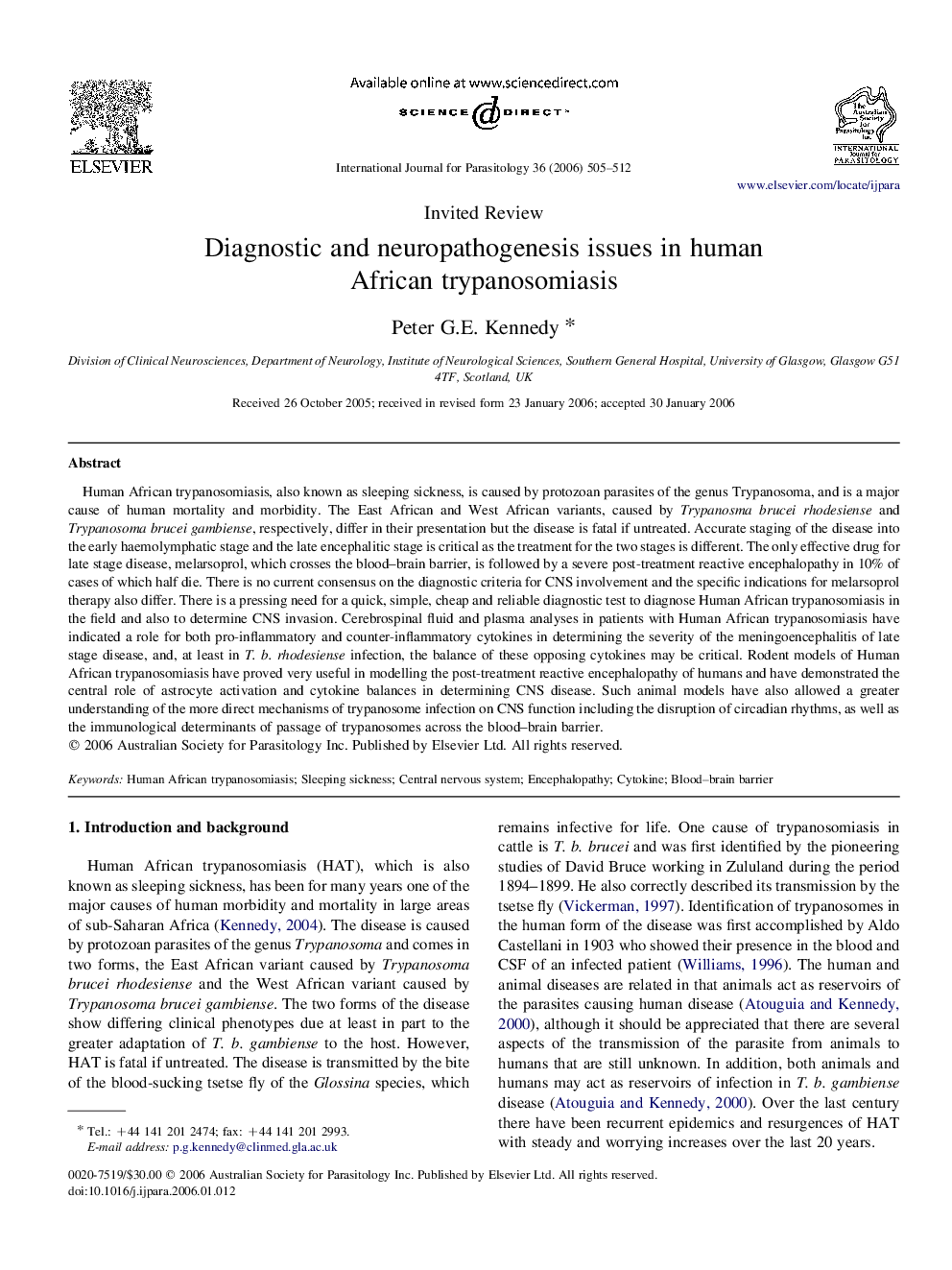| Article ID | Journal | Published Year | Pages | File Type |
|---|---|---|---|---|
| 2436942 | International Journal for Parasitology | 2006 | 8 Pages |
Human African trypanosomiasis, also known as sleeping sickness, is caused by protozoan parasites of the genus Trypanosoma, and is a major cause of human mortality and morbidity. The East African and West African variants, caused by Trypanosma brucei rhodesiense and Trypanosoma brucei gambiense, respectively, differ in their presentation but the disease is fatal if untreated. Accurate staging of the disease into the early haemolymphatic stage and the late encephalitic stage is critical as the treatment for the two stages is different. The only effective drug for late stage disease, melarsoprol, which crosses the blood–brain barrier, is followed by a severe post-treatment reactive encephalopathy in 10% of cases of which half die. There is no current consensus on the diagnostic criteria for CNS involvement and the specific indications for melarsoprol therapy also differ. There is a pressing need for a quick, simple, cheap and reliable diagnostic test to diagnose Human African trypanosomiasis in the field and also to determine CNS invasion. Cerebrospinal fluid and plasma analyses in patients with Human African trypanosomiasis have indicated a role for both pro-inflammatory and counter-inflammatory cytokines in determining the severity of the meningoencephalitis of late stage disease, and, at least in T. b. rhodesiense infection, the balance of these opposing cytokines may be critical. Rodent models of Human African trypanosomiasis have proved very useful in modelling the post-treatment reactive encephalopathy of humans and have demonstrated the central role of astrocyte activation and cytokine balances in determining CNS disease. Such animal models have also allowed a greater understanding of the more direct mechanisms of trypanosome infection on CNS function including the disruption of circadian rhythms, as well as the immunological determinants of passage of trypanosomes across the blood–brain barrier.
